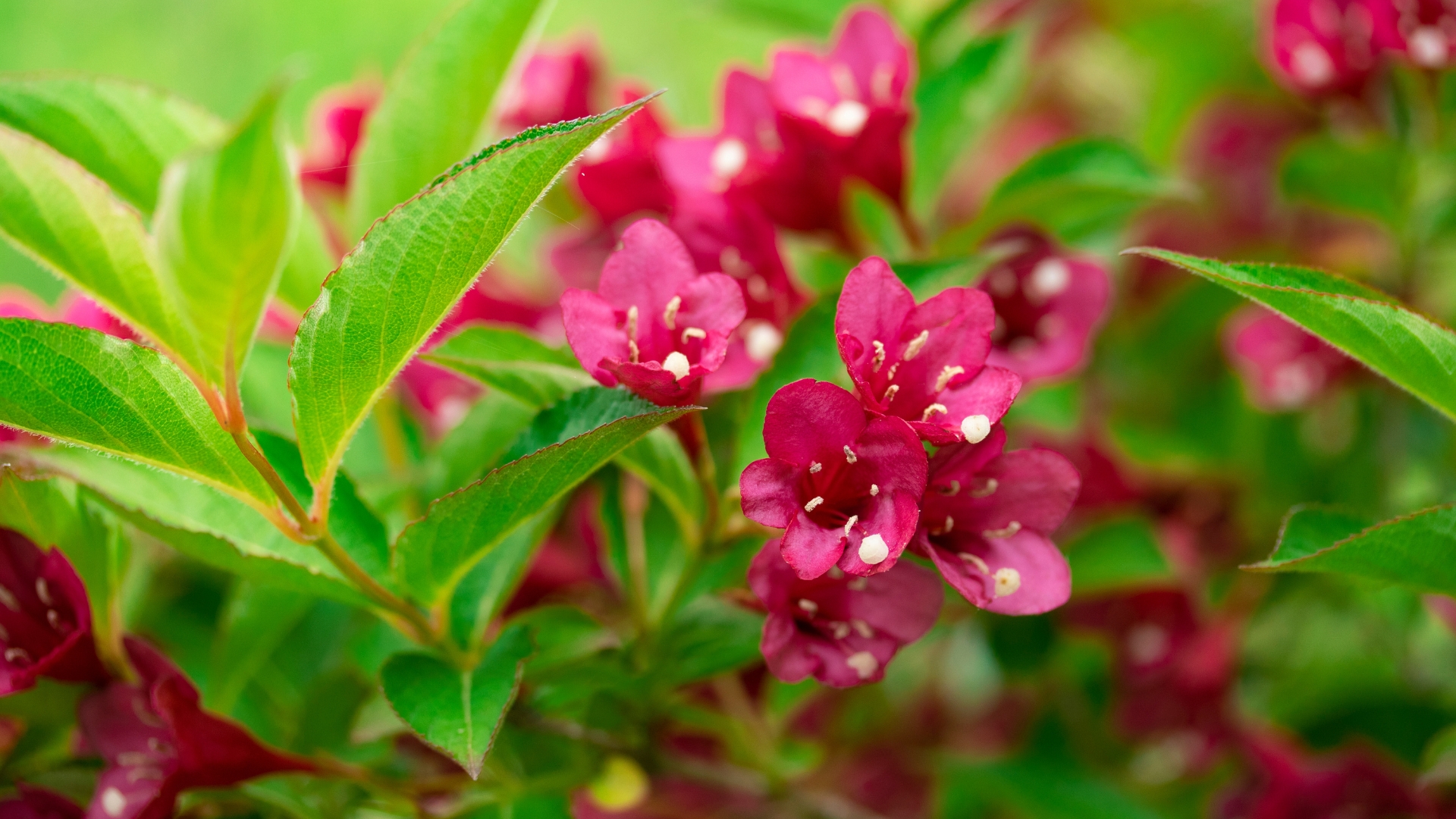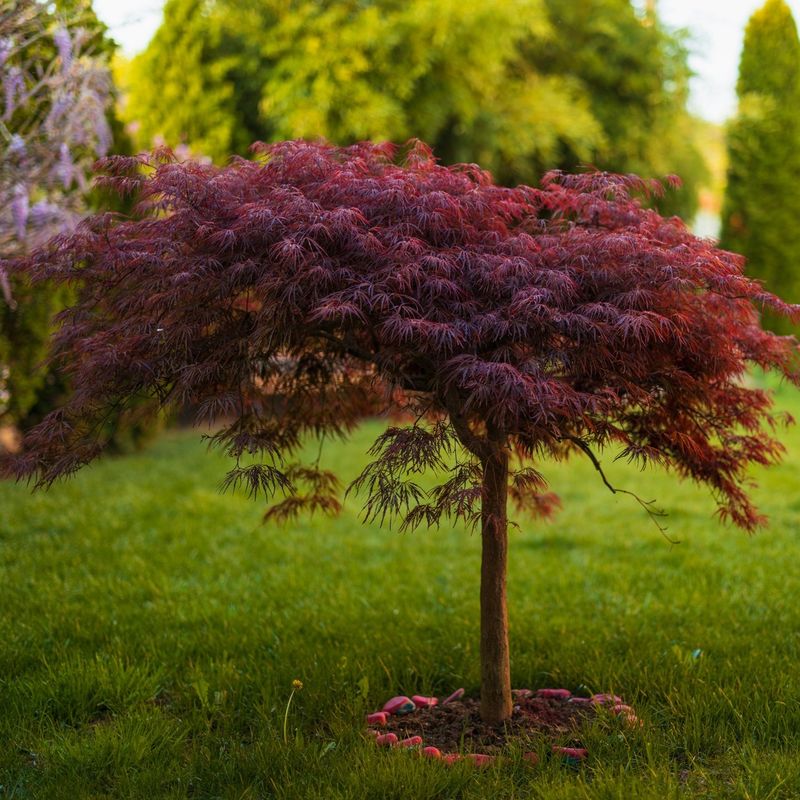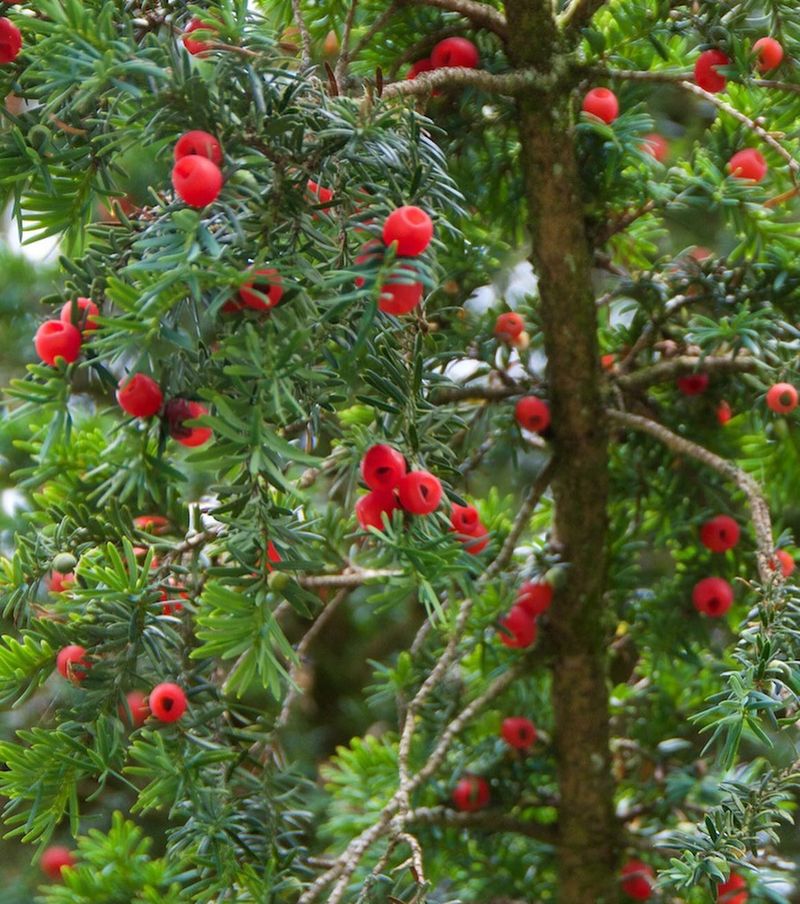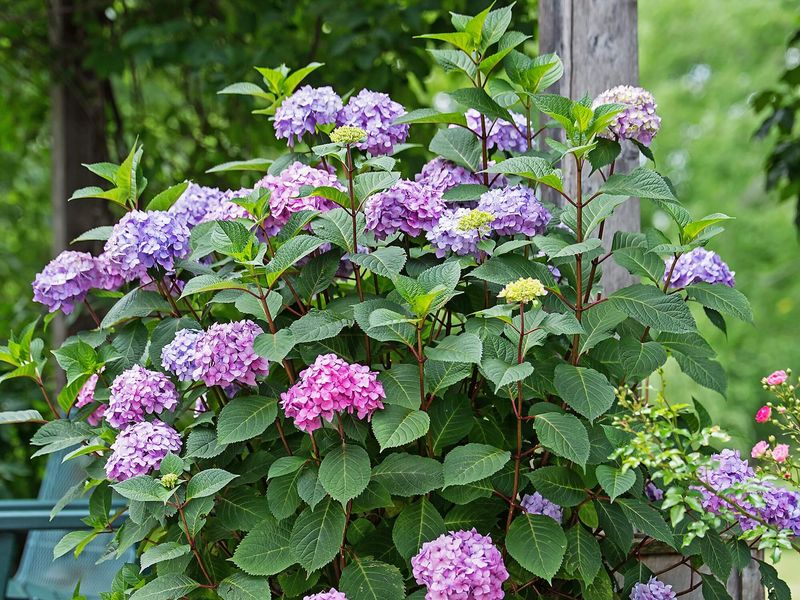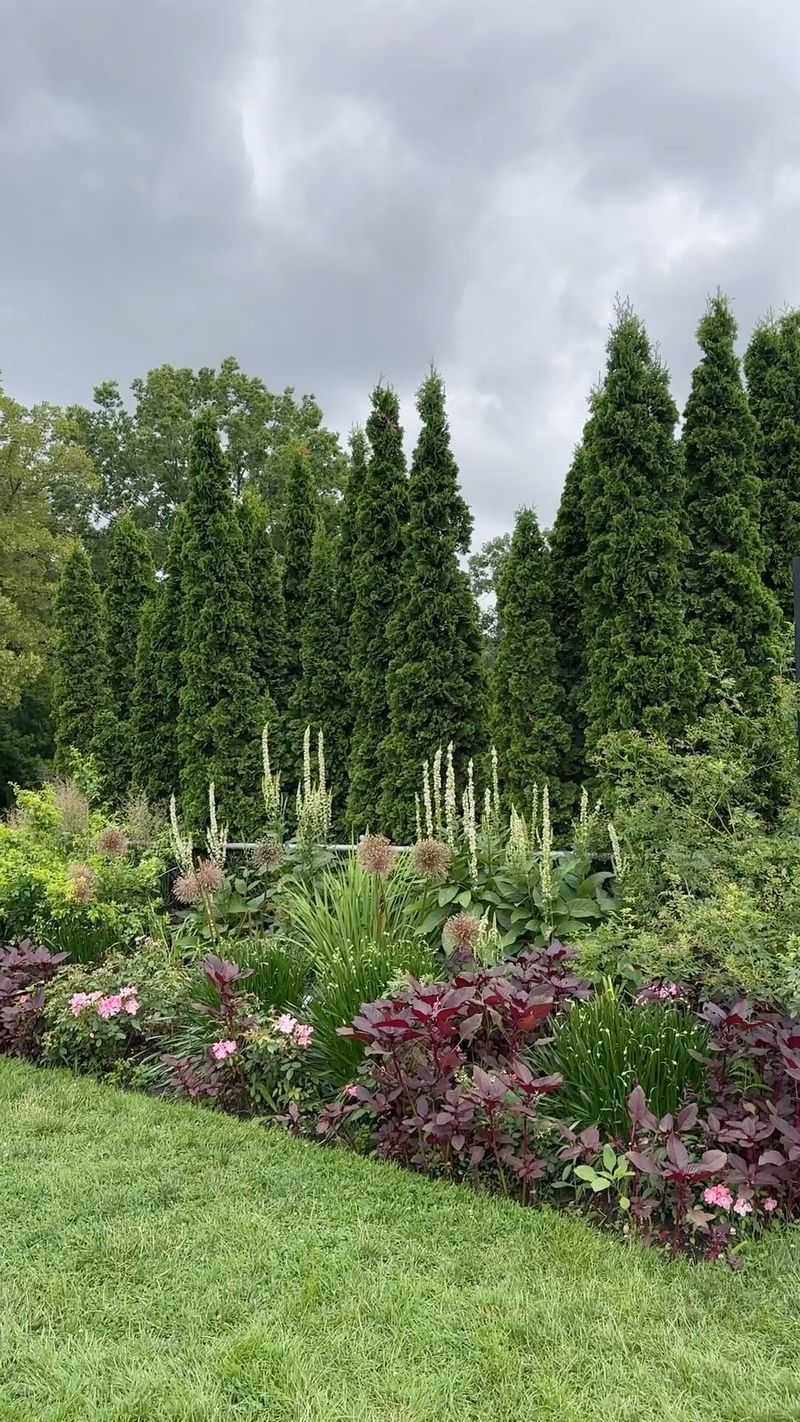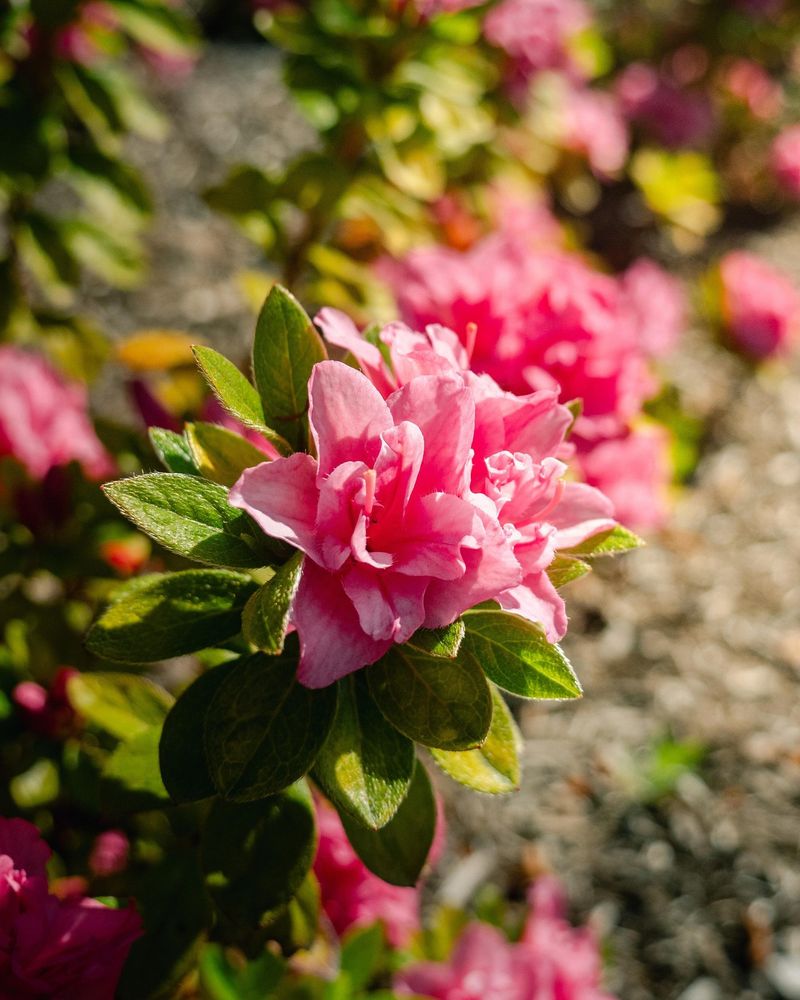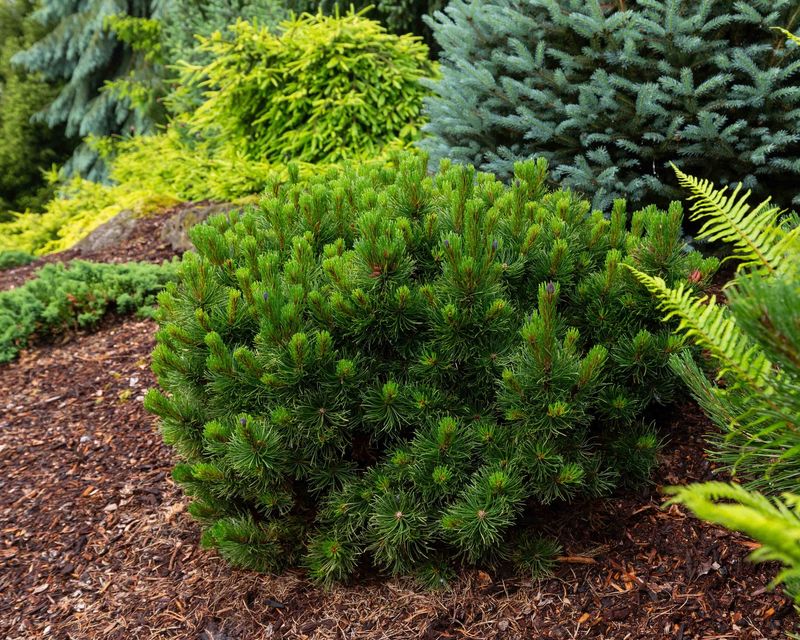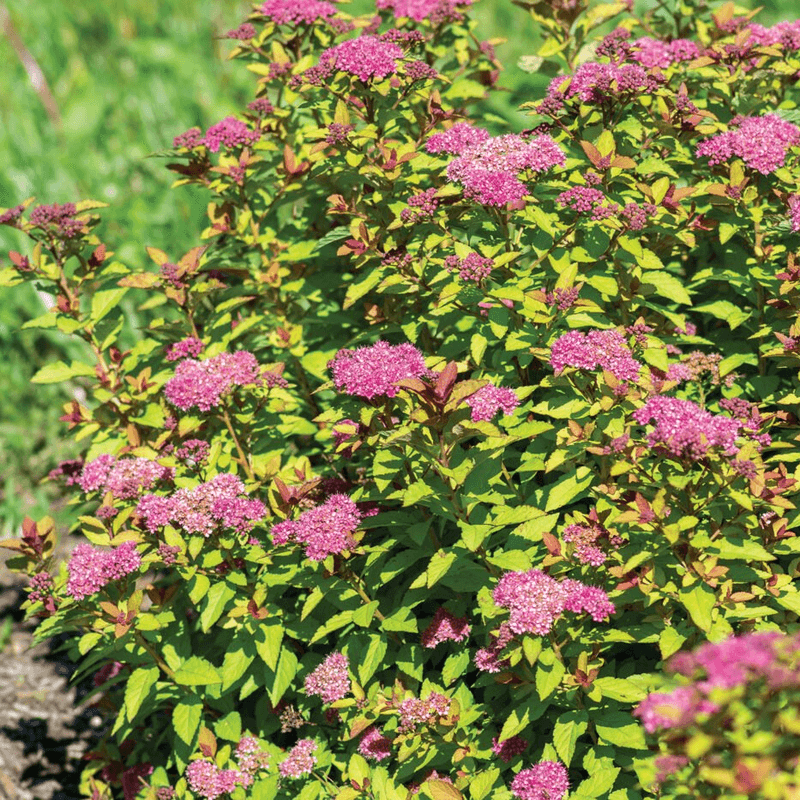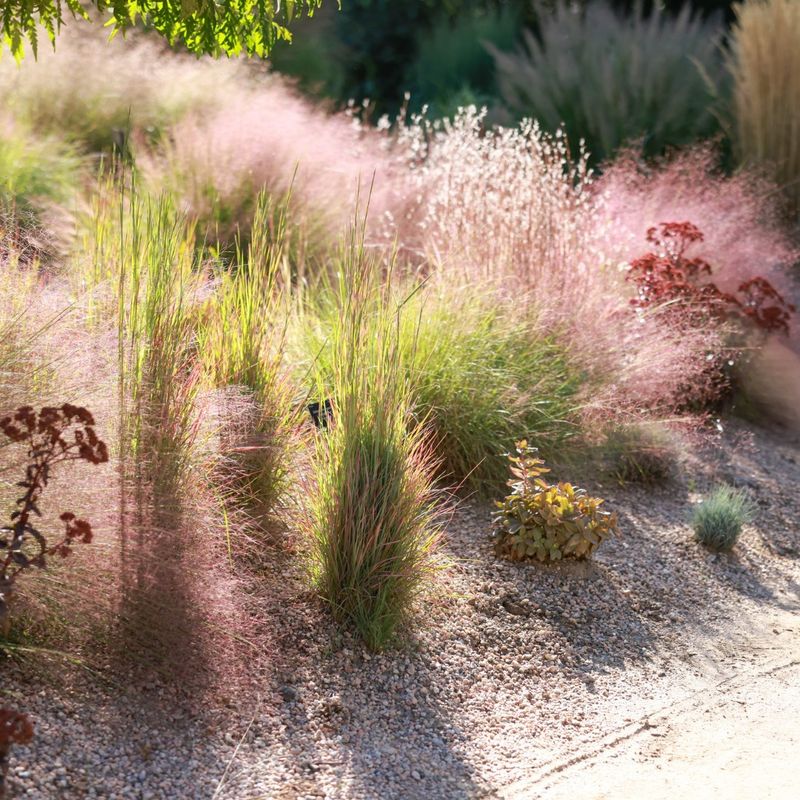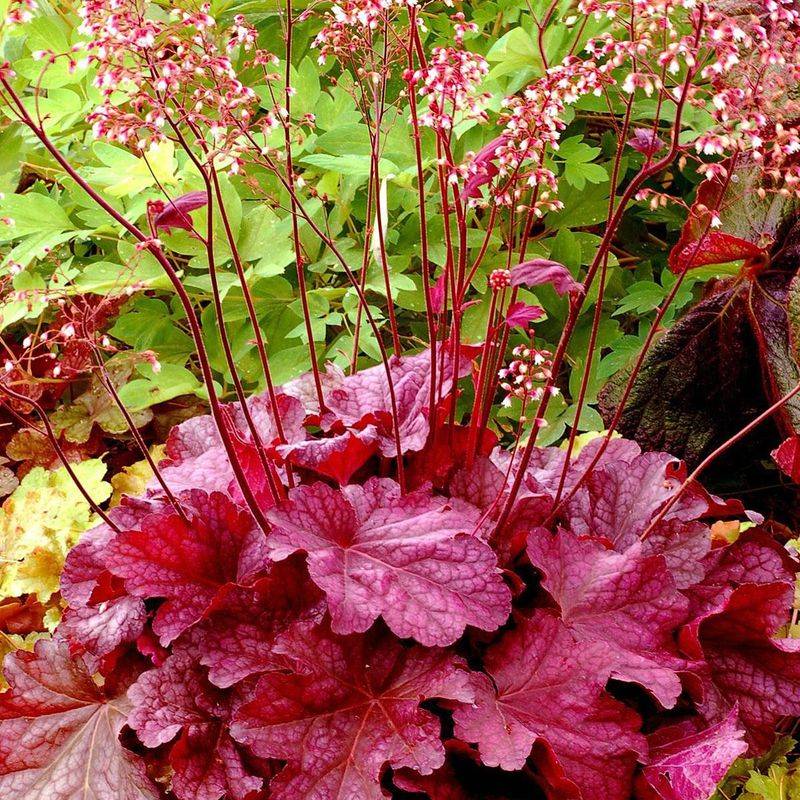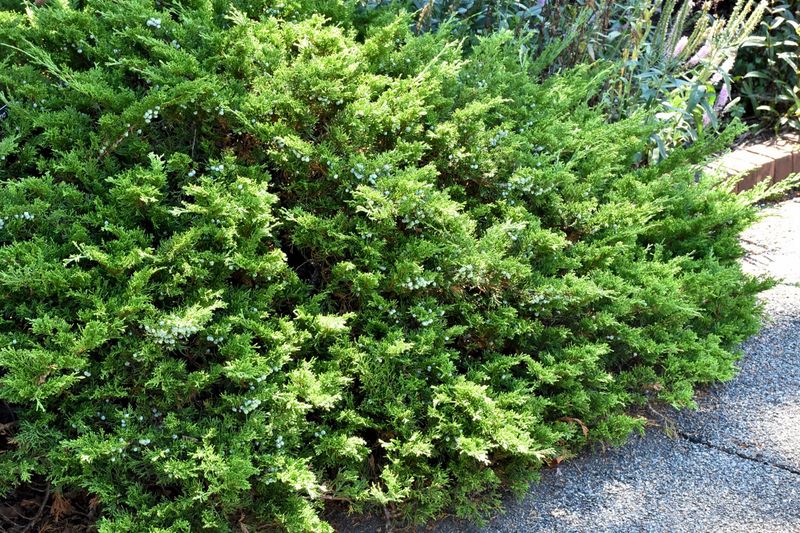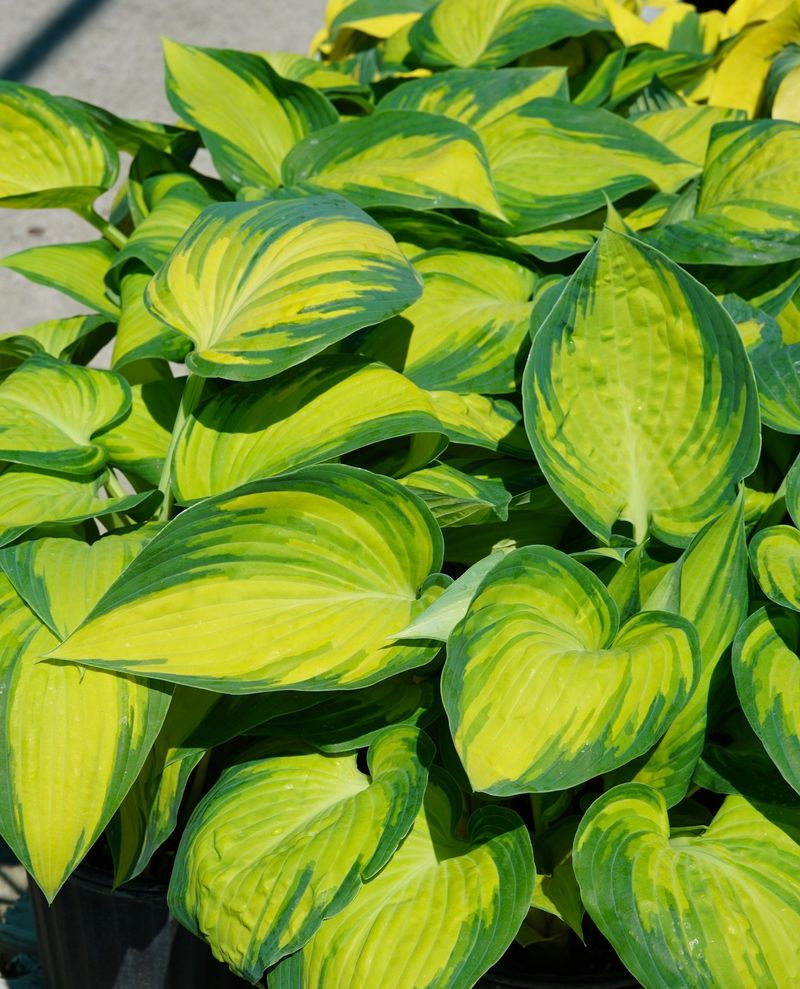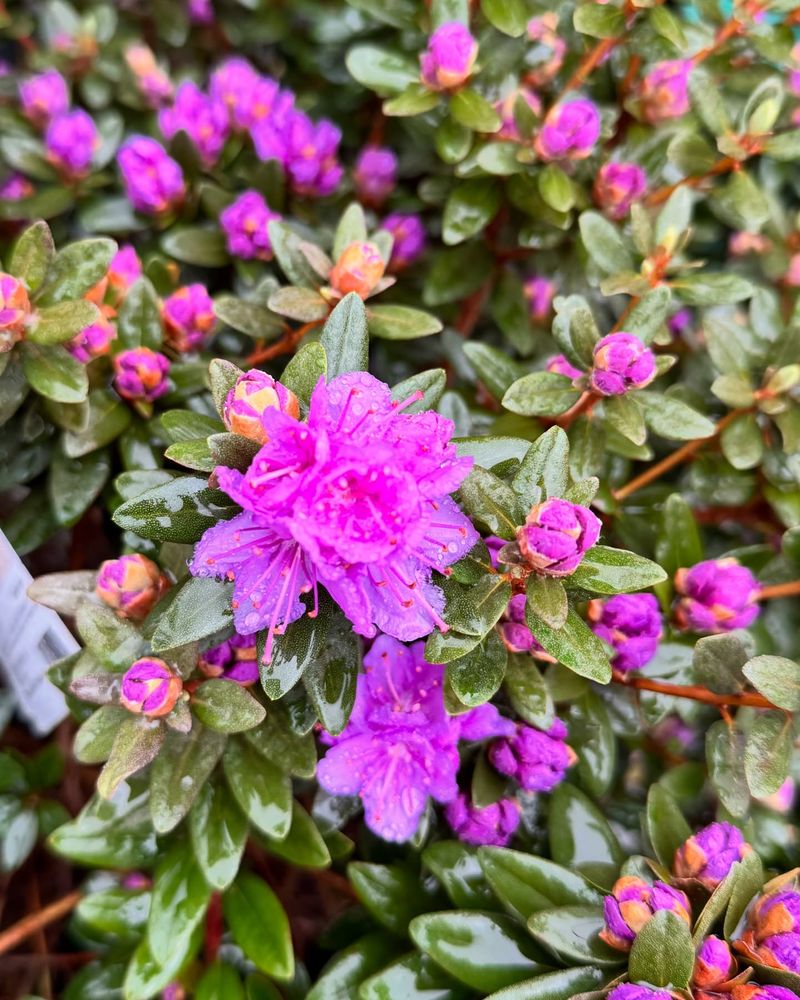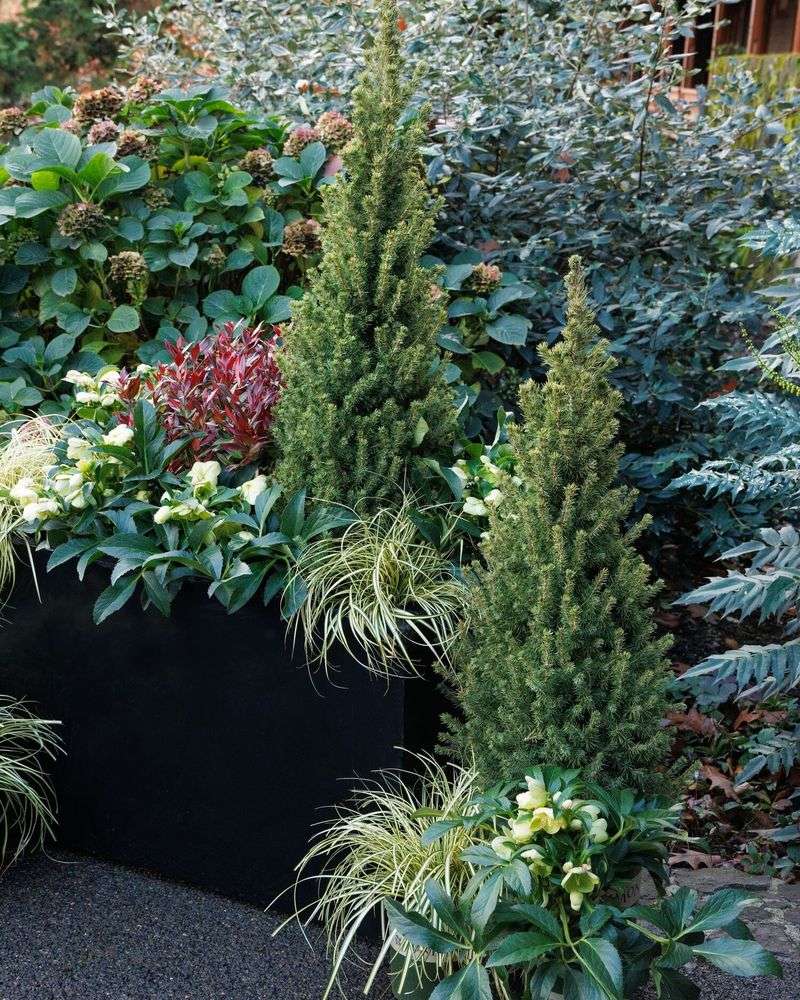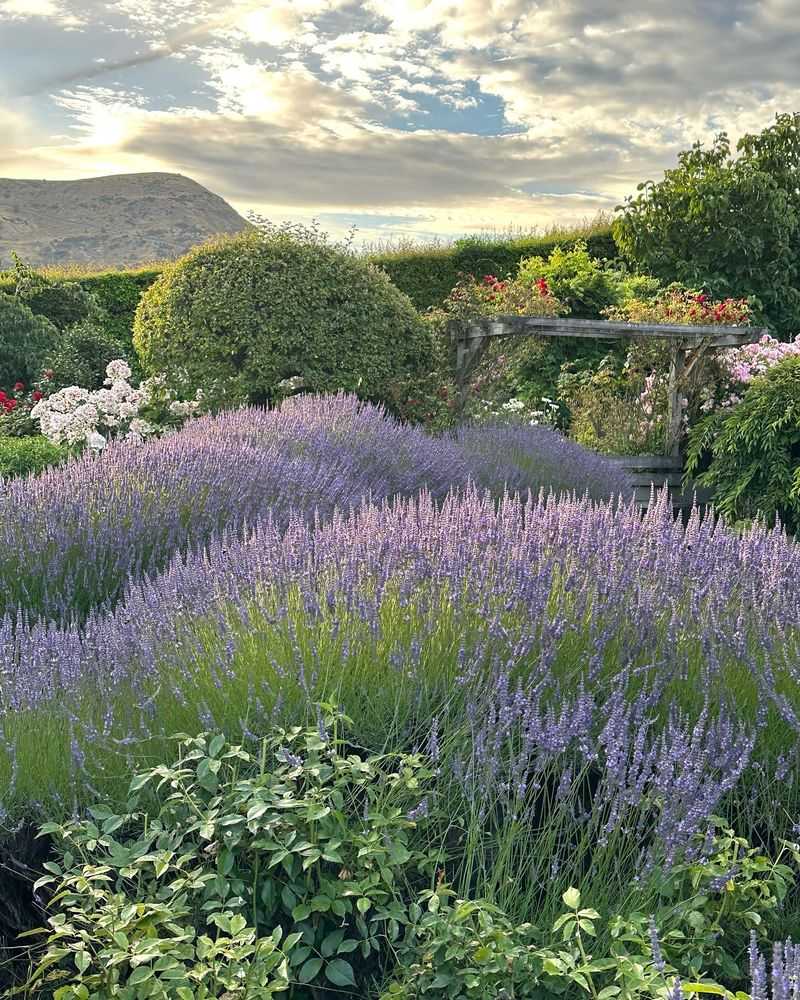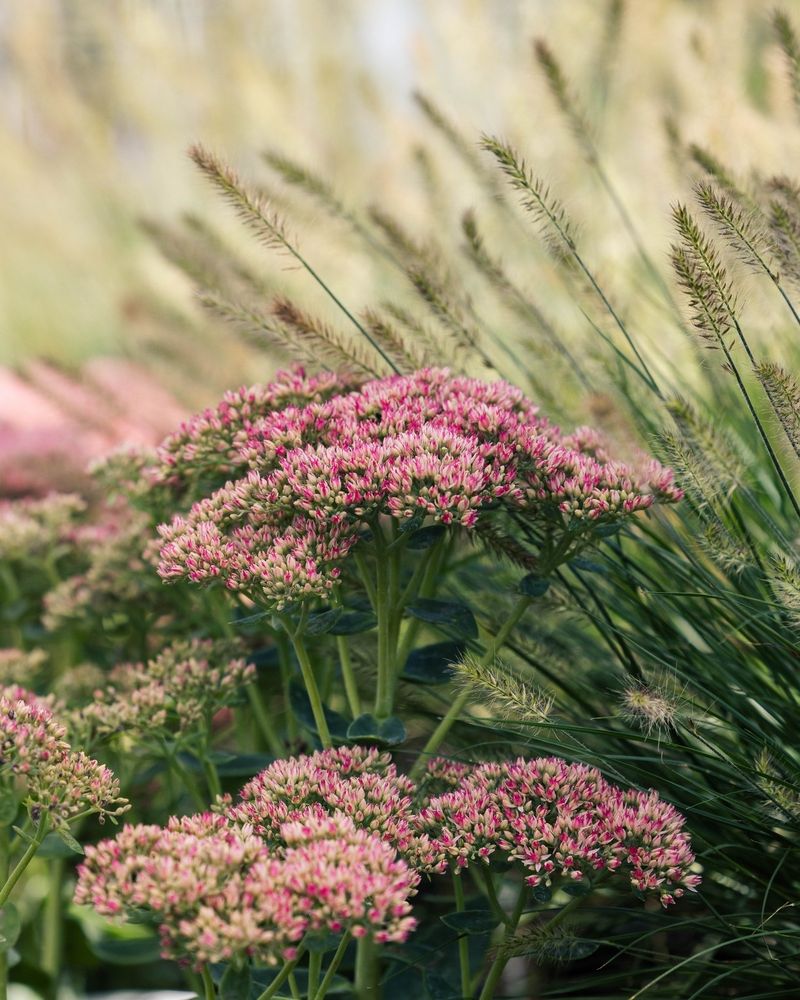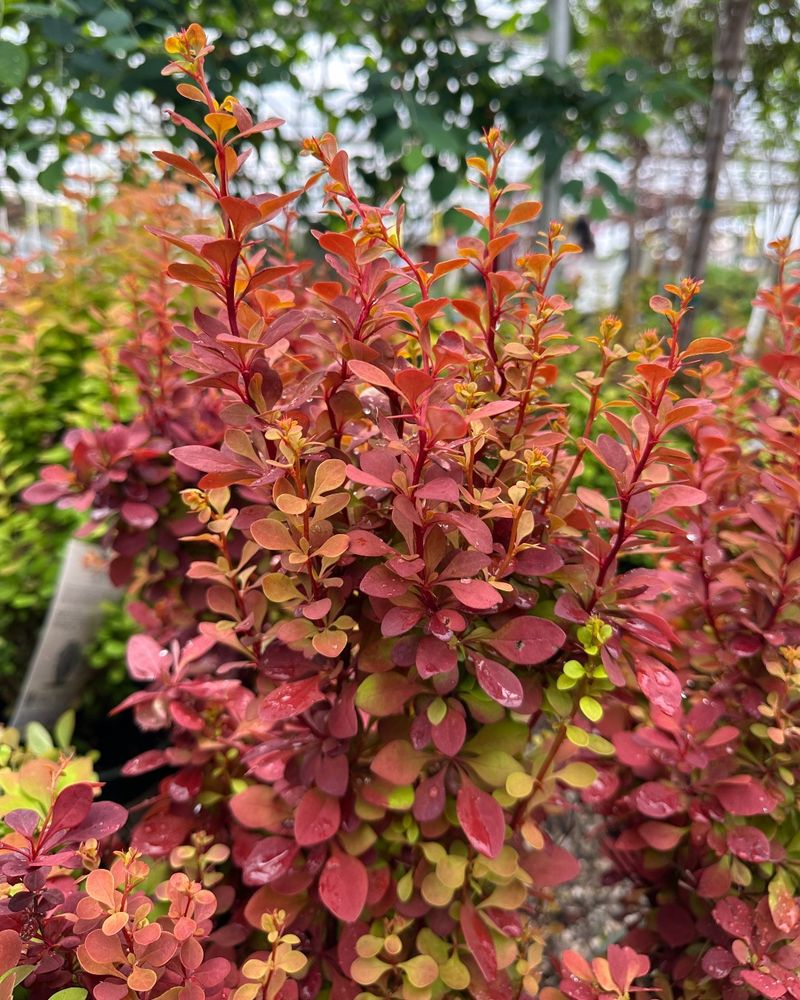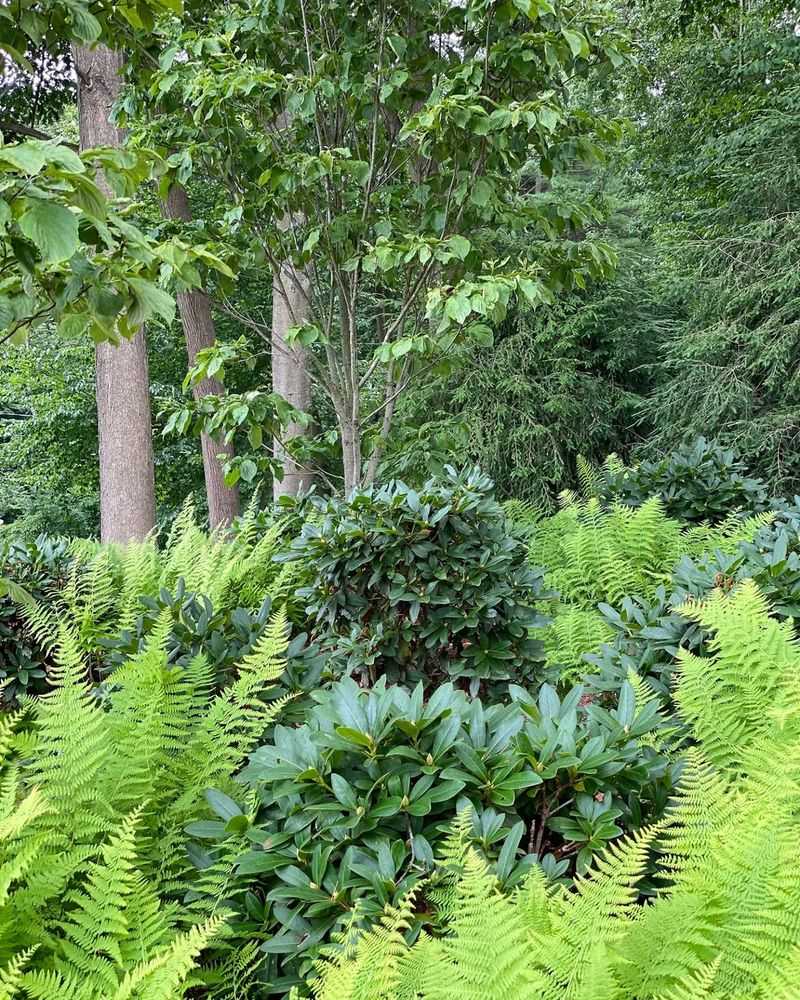Planting near the house can be tricky—I’ve learned that the hard way. You want something that looks great but won’t wreck the foundation or demand too much attention.
After plenty of trial and error, I’ve found some real winners that check all the boxes. These 18 plants are not just safe for the spot, they actually make it look better.
If you’re stuck on what to grow near the house, here’s a list I wish I had years ago!
1. Boxwood
These classic evergreen shrubs have shallow, non-invasive root systems that won’t threaten your foundation. They maintain a tidy appearance with minimal maintenance, making them perfect for formal landscapes.
Boxwoods come in various sizes and can be shaped into almost any form. Their dense foliage provides year-round structure and color, even during winter months when other plants go dormant.
2. Japanese Maple
With their gentle root systems and modest growth habits, Japanese maples make stunning foundation specimens. The delicate, colorful foliage creates a focal point that changes through seasons without endangering your home’s structure.
Available in countless varieties with different colors and leaf shapes, there’s a Japanese maple for every garden style. Most stay relatively small, reaching just 6-10 feet tall at maturity.
3. Yew
Incredibly versatile and long-lived, yews feature fine-textured needles that create a soft, elegant appearance. Their slow growth and manageable root systems make them ideal foundation companions that won’t cause structural concerns.
Yews tolerate heavy pruning, allowing you to maintain them at your desired size and shape. Many varieties stay naturally compact, requiring minimal maintenance while providing rich green color year-round.
4. Hydrangea
Gardeners love hydrangeas for their showstopping blooms and foundation-friendly growing habits. Their fibrous, non-aggressive root systems won’t disturb your home’s structure while providing spectacular seasonal displays.
Most varieties reach just 3-5 feet tall, making them perfectly proportioned for foundation areas. The flowers change color based on soil pH, allowing you to customize your landscape’s appearance with simple soil amendments.
5. Arborvitae
Perfect for creating privacy without foundation damage, arborvitae features a naturally columnar growth habit. The dense, feathery foliage provides year-round screening while the roots remain shallow and non-threatening to structures.
Many varieties grow quite tall but stay narrow, making them ideal for tight spaces between homes. Their minimal maintenance needs and drought tolerance once established make them practical choices for busy homeowners.
6. Azalea
Beloved for their spectacular spring blooms, azaleas feature shallow, fibrous root systems that pose no threat to foundations. Their compact growth habit makes them ideal for smaller spaces around your home’s perimeter.
Available in countless colors from white to deep purple, azaleas create seasonal drama without structural concerns. Many newer varieties offer improved disease resistance and repeat blooming for extended color throughout the growing season.
7. Dwarf Mugo Pine
Slow-growing and naturally compact, these charming evergreens maintain a tidy appearance with minimal maintenance. Their shallow root systems won’t disturb foundations, while their unique texture adds year-round interest to your landscape.
Mugo pines typically reach just 3-5 feet tall and wide at maturity. Their dense, dark green needles and interesting branch structure create visual appeal even in winter when other plants lose their leaves.
8. Spirea
Offering spectacular seasonal color with foundation-friendly growing habits, spirea features mounding growth and shallow roots. The arching branches create a graceful appearance while staying clear of siding and windows.
Spring-blooming varieties explode with white flowers, while summer bloomers offer pink to red blossoms. Many newer cultivars also feature colorful foliage, providing multi-season interest even when not in bloom.
9. Ornamental Grasses
Adding movement and texture to foundation plantings, ornamental grasses feature fibrous, non-invasive root systems. Their vertical growth creates architectural interest without threatening your home’s structure.
Available in countless varieties from 1-6 feet tall, there’s a grass for every landscape style. Many produce stunning seed heads that persist through winter, providing year-round visual interest and food for birds.
10. Coral Bells
Featuring colorful foliage in shades from purple to chartreuse, coral bells add year-round interest to foundation areas. Their tiny, shallow roots pose zero threat to structures while creating spectacular ground-level color.
Most varieties stay under 12 inches tall, making them perfect for front-of-border plantings. Delicate flower spikes rise above the foliage in summer, attracting hummingbirds and adding vertical interest to the landscape.
11. Creeping Juniper
Ground-hugging and drought-tolerant, creeping junipers provide excellent foundation coverage without structural concerns. Their spreading habit helps suppress weeds while their shallow roots won’t interfere with your home’s foundation.
Available in various colors from blue-green to gold, these evergreens maintain their appearance year-round. Their dense growth helps prevent soil erosion on slopes and reduces maintenance needs around your home’s perimeter.
12. Hostas
Shade-loving and foundation-friendly, hostas feature clumping growth habits with non-invasive roots. Their lush foliage in various colors and patterns brightens shady foundation areas without threatening structures.
Available in sizes from miniature to massive, there’s a hosta for every space. Many varieties also produce lovely flower spikes in summer that attract hummingbirds, adding another dimension of garden interest.
13. Dwarf Rhododendron
Compact varieties of these flowering shrubs offer spectacular spring blooms without aggressive root systems. Their shallow, fibrous roots stay close to the surface, posing no threat to your home’s foundation.
Many dwarf varieties reach just 2-3 feet tall at maturity, making them perfectly proportioned for foundation areas. Their evergreen foliage provides year-round structure and interest, even when they’re not in bloom.
14. Dwarf Conifers
Slow-growing and naturally compact, dwarf conifers add year-round structure and color to foundation plantings. Their minimal root systems won’t disturb foundations, while their diverse forms create lasting visual interest.
Available in countless shapes from globe to weeping to pyramidal, there’s a dwarf conifer for every design need. Many feature unique colors like blue, gold, or variegated foliage that stands out beautifully against your home’s exterior.
15. Lavender
Fragrant and foundation-friendly, lavender features compact growth and shallow roots that won’t threaten structures. The aromatic foliage and stunning purple flower spikes create sensory appeal near entryways and walkways.
Most varieties stay under 2 feet tall, maintaining a tidy appearance with minimal maintenance. Their drought tolerance once established makes them practical choices for busy homeowners in many climate zones.
16. Sedum
Drought-tolerant and foundation-safe, sedums feature succulent foliage and shallow root systems that won’t disturb structures. Their low maintenance needs make them perfect for busy homeowners who want attractive foundation plantings without the work.
Available in ground-hugging and upright forms, sedums offer versatile design options. Many produce spectacular flower heads in late summer that persist into winter, providing multi-season interest.
17. Barberry
With their colorful foliage and compact growth, barberry shrubs make excellent foundation plants. Their non-aggressive roots stay clear of structures while their thorny branches provide a natural security barrier near windows.
Available in purple, gold, and variegated forms, barberries add year-round color to your landscape. Many newer varieties are sterile, addressing invasive concerns while maintaining their desirable landscape qualities.
18. Ferns
Perfect for shady foundation areas, ferns feature delicate fronds and clumping growth habits that won’t threaten structures. Their fibrous root systems stay close to the surface while adding lush, woodland texture to your landscape.
Many hardy varieties maintain their appearance throughout the growing season with minimal care. Their natural elegance softens the transition between your home’s structure and the surrounding landscape.

